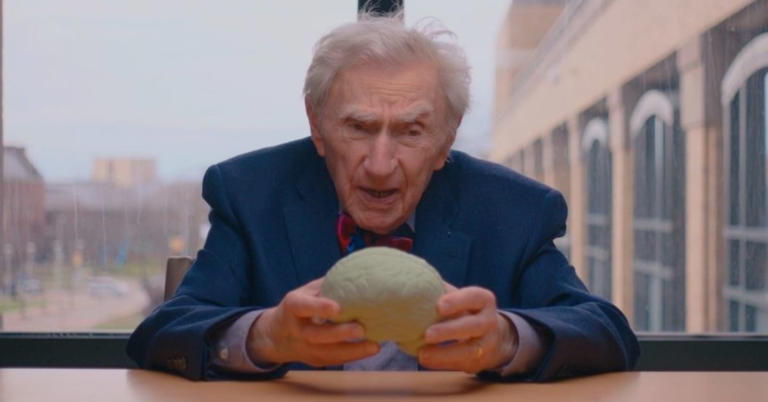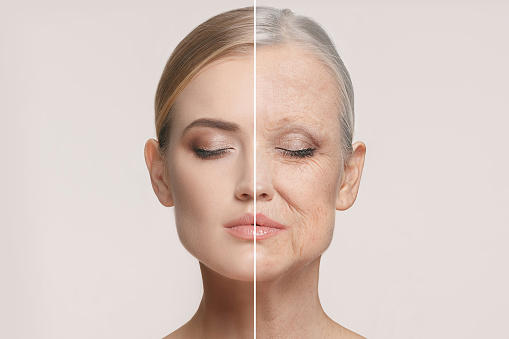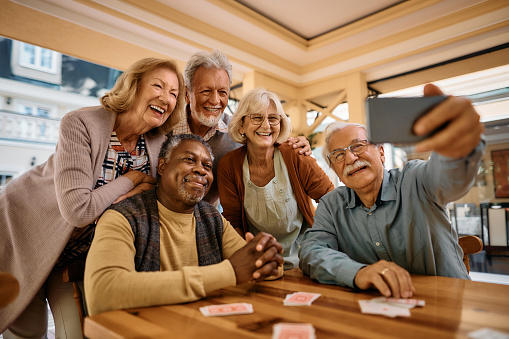At 116, She Has Outlived Generations of Loved Ones. But Her Entire Town Has Become Family.
When the nation’s oldest person has a birthday, a California community makes sure to celebrate.

When Edith Ceccarelli was born in February 1908, Theodore Roosevelt was president, Oklahoma had just become the nation’s 46th state and women did not yet have the right to vote.
At 116, Ms. Ceccarelli is the oldest known person in the United States and the second oldest on Earth. She has lived through two World Wars, the advent of the Ford Model T — and the two deadliest pandemics in American history.
For most of that time, she has lived in one place: Willits, a village tucked in California’s redwood forests that was once known for logging but now may be better known for Ms. Ceccarelli.
At Willits City Hall, where 100-foot redwoods tower overhead, a gold-framed photograph of Ms. Ceccarelli sits in a display case. Last year, the Mendocino County Board of Supervisors proclaimed Feb. 5 as a day to celebrate the county’s favorite daughter.
ImageSaprina Rodriguez crouches while holding a framed proclamation next to a chair in which Edith Ceccarelli is seated. A cake rests on a table next to the chair. Other people, including a TV camera operator, are gathered in the room.

Saprina Rodriguez, the mayor of Willits, presented Ms. Ceccarelli with a proclamation before her birthday celebration.Credit...Alexandra Hootnick for The New York Times
Image
A two-tiered cake is decorated with roses and gold numeral candles forming the number 116.

Ms. Ceccarelli was born on Feb. 5, 1908.Credit...Alexandra Hootnick for The New York Times
Image
Edith Ceccarelli sits behind a table covered in roses and surrounded by balloons. A banner on the front of the table reads: “AGE is just a number! Happy 116th EDIE! We love you, HOLY SPIRIT CARE HOME”

Ms. Ceccarelli is the oldest known person in America.Credit...Alexandra Hootnick for The New York Times
“When she hit her hundredth birthday, the whole community was kind of in awe, and she became a bit of a local celebrity,” said Mayor Saprina Rodriguez, who at 52 is less than half Ms. Ceccarelli’s age.
Nestled in a valley surrounded by forested peaks in rural Mendocino County, in California’s North Coast region, Willits prospered from its booming lumber industry when Ms. Ceccarelli was a little girl. But that boom is long gone, and Willits remains a small, working-class community of about 5,000 people.
Because it is about 30 miles inland from the Pacific Ocean, Willits has never attracted the tourists who flock to coastal destinations like Mendocino and Fort Bragg, with their Instagrammable wineries and cottages perched on seaside bluffs, along with whale-watching opportunities.
But neither of those places has Ms. Ceccarelli.
On Sunday, Willits hosted its annual celebration for its most treasured resident, who watched from the porch of her care home. It was raining, the beginning of another atmospheric river — what they just called downpours for most of Ms. Ceccarelli’s life — but nobody in Willits gave a thought to canceling the annual festivities.
A parade of flashing police cruisers and fire trucks passed by. Then a garbage truck. Sedans adorned with garlands, balloons and flowers followed, ferrying residents who waved and sang to their beloved Edie.
“She’s a local icon,” said Suzanne Picetti-Johnson, a longtime Willits resident who had donned a rain jacket and beanie and was directing an S.U.V. with “Happy Sweet 116!” scrawled on its rear window. “She’s always been just a total delight, and we’re thrilled to celebrate her one more year.”
On Feb. 5, 1908, Edith Recagno was delivered by her aunt in a house in Willits that her father had built by hand. The home had no electricity or running water, so a hand-dug well provided the family with drinking water and, in lieu of a refrigerator, a cool place to hang milk and meat.
She was the first of seven children born to Agostino and Maria Recagno, who were Italian immigrants drawn to Mendocino County by opportunity. Willits, where bright green moss covers tree trunks and giant ferns unfurl along the banks of icy creeks, was settled by pioneering ranchers in the 1850s as fortune-seekers flocked to California during the Gold Rush.
Image
Horses graze in a meadow with trees beyond and mist rising in front of wooded hills in the distance.

Mendocino County was settled by ranchers.Credit...Alexandra Hootnick for The New York Times
Image
People sit at high-top and standard tables in a cafe with a service counter at the right, artwork on the brick walls, a stamped tin ceiling and a plank floor.

Local residents gather at the Brickhouse Coffee in Willits, Calif. In 1911, the building housed the Bank of Willits.Credit...Alexandra Hootnick for The New York Times
Image
An arch extends across a roadway with signs reading “WILLITS” and “GATEWAY TO THE REDWOODS” attached to it.

Willits is in a valley surrounded by forested peaks in rural Mendocino County.Credit...Alexandra Hootnick for The New York Times
But then big trees became big business here. Groves of ancient redwoods and other trees were chopped down and sent south to help build a fast-growing San Francisco. Ms. Ceccarelli’s father worked as a carpenter to extend the railroad to Willits, which by the early 1900s allowed Bay Area tourists to come and vacation in the Redwood Empire’s crisp mountain air. For $2.50 a night, guests at the 100-room Hotel Willits enjoyed on-site tennis courts, a bowling alley and a dining room known as the finest north of San Francisco.
Growing up, Ms. Ceccarelli played basketball, tennis and saxophone — her mother had to save up money to buy the instrument — and she loved to sing and dance. She recalled that her father, who opened a grocery store in Willits in 1916, would chop firewood and haul it home after work.
“He would sit with us after dinner and help us read,” Ms. Ceccarelli once wrote. “He only had a third-grade education, but he was smart. I can still see the oil lamp on the table where we read.”
From there, Ms. Ceccarelli’s life unfolded like many others. She married her high school sweetheart, Elmer Keenan, when she was 25, and they moved to nearby Santa Rosa, where he took a job as a typesetter at The Press Democrat newspaper. The couple soon adopted a baby daughter. In 1971, after her husband retired, the pair returned to Willits.
Ms. Ceccarelli continued to age, but not everyone in her life was so lucky. Her husband died in 1984, after more than 50 years of marriage. Ms. Ceccarelli remarried, and her second husband, Charles Ceccarelli, died in 1990. Her daughter died, at age 64, in 2003. Ms. Ceccarelli has since outlived her six younger siblings, as well as her three granddaughters, who each died in their 40s because of a genetic condition.
Image
Color photos in an album with cursive writing under each one.

One of Ms. Ceccarelli’s albums shows photos from 1989, when she was a youthful 81 years old.Credit...Alexandra Hootnick for The New York Times
Image
An arrangement of items including framed photos, a makeup kit, eyeglasses and a teacup and saucer.

Ms. Ceccarelli’s bedroom at the Holy Spirit Residential Care Home has mementos from her life.Credit...Alexandra Hootnick for The New York Times
Image
A person’s hands hold a photo album in which black-and-white photos are mounted with cursive writing around them.

Black-and-white family photo albums are captioned in Ms. Ceccarelli’s cursive.Credit...Alexandra Hootnick for The New York Times
“They’re all gone — they’ve been gone for years and years,” Evelyn Persico, 84, said while thumbing through black-and-white photo albums captioned in Ms. Ceccarelli’s cursive. Ms. Persico, who is married to Ms. Ceccarelli’s second cousin and lives on a ranch in Willits, is one of her few remaining relatives.
So when her 100th birthday approached in 2008, Ms. Ceccarelli herself extended the invitation to all of Willits. Despite decades of change, such as the 101 highway cutting through Main Street and the growth of marijuana farms, Willits remained a tight-knit community. The elegant Ms. Ceccarelli had become known for never missing a dance at the senior center and for her daily walks through town.
Wearing a fuchsia suit and heels, she waltzed alongside more than 500 people who had come to celebrate her new status as a centenarian, and a tiara was placed on her white hair by the mayor at the time.
From then on, Ms. Ceccarelli’s birthday each year has been marked by a party, a lunch or, in the Covid era, a parade, open to all Willits residents. Often wearing a colorful scarf and pearls, she would pass on her wisdom on how to live a long life: “Have a couple of fingers of red wine with your dinner, and mind your own business.”
Other years, she would regale guests with stories of bygone days, of meeting a man who had lunched with Abraham Lincoln or of hearing all the bells in Willits ring on Nov. 11, 1918, signaling the end of World War I.
“I like the small town, you know more people,” Ms. Ceccarelli told the local paper just before her 107th birthday party. “You go to a big city, you don’t know anybody.”
Image
A young boy wearing a tuxedo and holding a cowboy hat and a light blue garland stands in a white S.U.V. so that he emerges through the moon roof. Two women and a young girl are inside the S.U.V., which is decorated with garlands and balloons.

On Sunday, Willits hosted its annual birthday celebration for Ms. Ceccarelli, who watched from the porch of her care home as a parade drove by.Credit...Alexandra Hootnick for The New York Times
Image
A woman places a blue hat on the head of Edith Ceccarelli, who is seated. Pink roses are slightly blurred in the foreground.

“I like the small town, you know more people,” Ms. Ceccarelli told the local paper just before her 107th birthday party. “You go to a big city, you don’t know anybody.”Credit...Alexandra Hootnick for The New York Times
Image
A crouching woman and a young girl hold a handmade sign reading “Edie 116” in front of a canopy under which people have gathered.

Several generations of local residents turn out for Ms. Ceccarelli’s annual birthday celebration.Credit...Alexandra Hootnick for The New York Times
When her longtime dance partner and companion died, she turned again to Willits for support. She put an ad in the local paper:
“I, Edith Ceccarelli, also known as ‘Edie’ by her family and a multitude of friends, would like to keep on dancing,” she wrote in 2012. “Dancing keeps your limbs strong. What is nicer than holding a lovely lady in your arms and dancing a beautiful waltz or two-step together?
“Try it, you will like it,” she added, along with her phone number. She was 104 at the time.
Ms. Ceccarelli lived on her own until she was 107, and then moved into a residential care home in Willits. She has now lived 37 years longer than American women on average. The only person known to be older than her is Maria Branyas Morera, who lives in Spain, but was born in San Francisco 11 months before Ms. Ceccarelli.
The town has taken over the planning of her birthday parties, as her dementia has recently advanced, so she isn’t always aware of what is happening. On the morning of her party, she seemed satisfied to learn that everyone was there for her. She enjoyed a taste of her carrot cake adorned with “116.”
“I just marvel at her,” said Ms. Persico, who greeted Ms. Ceccarelli that day with a kiss on the forehead. “I can’t believe that this little Italian baby has such an amazing record for longevity, coming from such a small town like we are.”
https://www.nytimes.com/2024/02/07/us/e ... 778d3e6de3


















